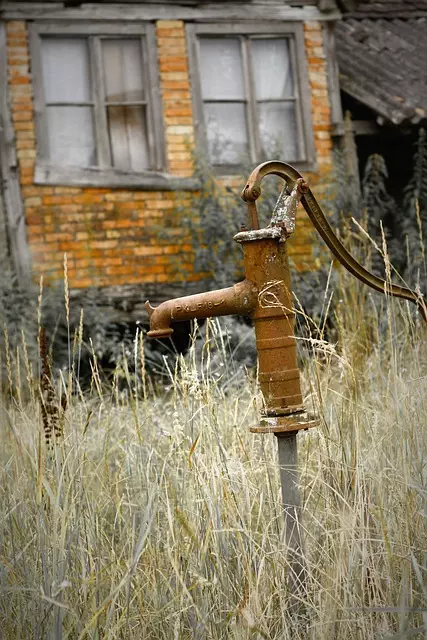Sonde training is crucial for professionals in Toledo, where complex urban landscapes require precise pipe locating. This specialized skill involves using sonde equipment, including various sondes, signal receivers, and tracing fluids, to navigate underground infrastructure safely. By mastering sonde and locating techniques, workers enhance accuracy and efficiency, ensuring safe pipeline mapping without damage. Regular training, adherence to industry standards, and advanced tools like Ground Penetration Radar (GPR) enable professionals to confidently locate pipes in Toledo's bustling streets. Certification through theoretical knowledge and hands-on practice ensures operators can competently use sonde equipment for pipe locating tasks.
In today’s world of complex infrastructure, accurate pipe locating is crucial. This comprehensive guide delves into the realm of sonde training and certification, equipping you with essential knowledge to navigate the challenges of sonde and locating techniques. From understanding sonde equipment for pipe locating to mastering best practices in locating Toledo, this article offers valuable insights from experts. By exploring the certification process, you’ll be well-prepared to become a skilled sonde operator, ensuring efficient and safe pipe identification.
- Understanding Sonde Training: A Comprehensive Overview
- Sonde Equipment for Pipe Locating: The Essentials
- Locating Toledo: Techniques and Best Practices
- Mastering Sonde and Locating Techniques: Tips from Experts
- Certification Process: Becoming a Skilled Sonde Operator
Understanding Sonde Training: A Comprehensive Overview
Understanding Sonde Training involves equipping professionals with the skills to use sonde equipment effectively for pipe locating. This specialized training delves into various techniques, ensuring individuals can accurately identify and map underground pipelines using sondes. The process includes hands-on practice with different types of sonde equipment, learning how to interpret data, and understanding the intricacies of navigating around obstacles like rocks or buried objects.
In the context of Locating Toledo, a city known for its complex urban landscape, sonde training becomes even more critical. Professionals must be adept at employing these techniques to safely and efficiently locate pipes beneath Toledo’s bustling streets and structures. This comprehensive overview ensures that locators are prepared to tackle challenges unique to urban environments, ultimately enhancing safety and streamlining infrastructure projects.
Sonde Equipment for Pipe Locating: The Essentials
In the realm of pipe locating, sonde equipment plays a pivotal role in navigating underground infrastructure with precision. Sonde and locating techniques have revolutionized the way we identify and map pipes, ensuring safe and efficient digging. When it comes to sonde equipment for pipe locating, several key components are essential for accurate results. These include specialized sondes, signal receivers, and tracing fluids designed to enhance detection capabilities.
The sonde itself is a critical tool that emits signals into the ground, which are then received by a remote detector. This non-invasive method allows professionals to pinpoint the location of pipes without causing any damage. Locating Toledo techniques often involve using different types of sondes tailored to specific pipe materials and depths. Proper training in sonde and locating techniques is crucial to ensure effective use, maximizing the benefits of this advanced technology for safe and precise underground navigation.
Locating Toledo: Techniques and Best Practices
Locating Toledo using sonde equipment and techniques is a precise art that demands skill and adherence to best practices. Sonde technology, employing electromagnetic signals and ground penetration, allows professionals to identify buried pipes non-invasively. Understanding the specific characteristics of different pipe materials and soil types is crucial for accurate readings. Companies specializing in sonde training and certification equip workers with the knowledge to interpret data effectively, ensuring safe and efficient pipeline mapping.
Adhering to industry standards and utilizing advanced sonde equipment enhances accuracy and minimizes disruptions to surrounding infrastructure. Regular calibration of tools, systematic survey planning, and meticulous data recording are essential practices for achieving reliable results. By combining these techniques with ongoing training, professionals can confidently navigate complex underground landscapes, making Locating Toledo a precise and reliable process.
Mastering Sonde and Locating Techniques: Tips from Experts
Mastering sonde and locating techniques is a crucial step in becoming proficient in pipe locating. Experts recommend continuous practice to hone your skills with sonde equipment for pipe locating. Regular training sessions focused on different scenarios help simulate real-world challenges, ensuring you’re prepared for various obstacles. Utilizing advanced tools and staying updated with industry standards are also vital for accuracy and safety.
When it comes to locating pipes, experts suggest a methodical approach. This involves thoroughly assessing the area, understanding the type of pipes present, and selecting the appropriate sonde settings. By combining theoretical knowledge with hands-on experience, professionals can effectively navigate complex situations. Remember, the right combination of technique and technology is key to success in sonde and locating techniques for pipe locating.
Certification Process: Becoming a Skilled Sonde Operator
To become a skilled sonde operator, one must undergo a rigorous certification process that combines theoretical knowledge with hands-on experience. The journey starts with understanding the intricacies of sonde equipment and its various applications in pipe locating. Sonde, a specialized tool, is used to detect and map underground utilities, ensuring precise and safe excavation practices. The process involves learning about different types of sondes, their operational principles, and how to select the right equipment for specific jobs, especially when Locating Toledo.
Aspiring operators will also master various sonde and locating techniques, including ground penetration radar (GPR), electromagnetic location, and mechanical methods. These techniques are taught in detail, emphasizing safety protocols and best practices. Practical training sessions equip individuals with the skills to interpret data accurately and navigate complex underground landscapes. Certification is granted upon successful completion of these courses, ensuring that operators can confidently handle sonde equipment for pipe locating tasks.


